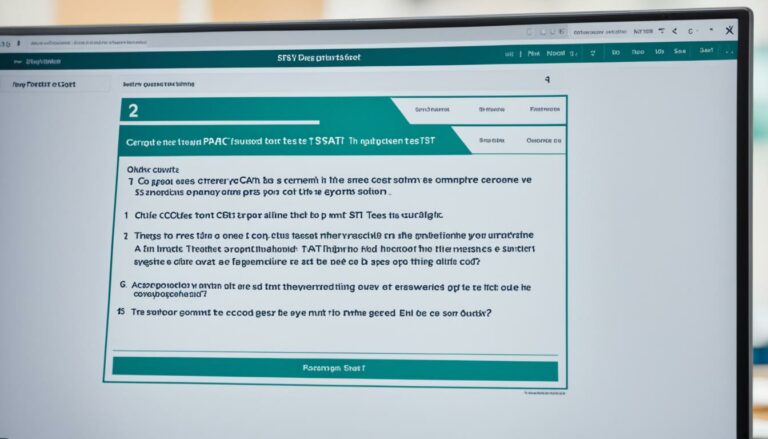IELTS vs. CELPIP: Which Exam Should You Take?
IELTS and CELPIP are two of the leading English language proficiency examinations globally. Although both aim to assess an individual’s command over the English language, they possess distinct characteristics that set them apart.
IELTS Test
The IELTS is an esteemed English proficiency exam recognized by over 10,000 institutions across 140 countries.
Intended for non-native English speakers aiming to study, work, or relocate to an English-speaking nation, the IELTS assesses their language capabilities.
The exam consists of four sections: Reading, Listening, Writing, and Speaking. The Listening and Reading sections are paper-based, whereas the Writing and Speaking sections require direct engagement with an examiner.
Scores are determined using a nine-band scale, where each band indicates a specific level of English proficiency.
CELPIP Test
The Canadian English Language Proficiency Index Program (CELPIP) is a test tailored to gauge proficiency in Canadian English. It’s recognized by Immigration, Refugees, and Citizenship Canada (IRCC) for both permanent residency and Canadian citizenship applications.
The CELPIP assessment comprises four sections: Listening, Reading, Writing, and Speaking. In contrast to the IELTS, CELPIP is completely computer-administered. Each section is graded on a scale of 1 to 12, with the overall score being an average of these four individual scores.
Key Differences
One of the key differences between the IELTS and CELPIP tests is the delivery mode. While the IELTS test has a paper-based component, the CELPIP test is entirely computer-based. The CELPIP test is also designed specifically for Canadian English, while the IELTS test is more internationally recognized.
Another critical difference between the two tests is the scoring system. While both tests evaluate a candidate’s English language proficiency, they use different scoring systems. The IELTS test is scored on a nine-band scale, while the CELPIP test is scored on a scale of 1 to 12.
Test Formats
IELTS and CELPIP are standardized language proficiency tests that evaluate an individual’s English language skills. However, there are differences between the two in terms of test format.
CELPIP Test Format
CELPIP is an entirely computer-based test. All test components, including the Listening, Reading, Writing, and Speaking sections, are delivered by computer. The test taker will use a keyboard and mouse to complete the test.
The test duration for CELPIP is around three hours. The Listening and Speaking sections are each 47-55 minutes long, while the Reading and Writing sections are 55-60 minutes long. The test taker will receive a total score of 12, with each section scoring out of 12.
IELTS Test Format
The IELTS exam comes in two formats: Academic and General Training. The Academic format is tailored for those pursuing higher education in English-speaking nations, whereas the General Training format suits those seeking employment, training, or secondary education in such countries.
🌟 Hey Students! 🚀 Ready for the ultimate experience? Join us on Studentsinside.com's Facebook, YouTube, WhatsApp, and LinkedIn. Click now for tips, fun, and success vibes! 🌈✨ #StudentLife #JoinUs
The IELTS test has both computer-based and paper-based components. The Listening, Reading, and Writing sections are paper-based, while the Speaking section is done in person with a trained examiner.
The test duration for IELTS is around three hours, with the Listening section lasting 30 minutes, the Reading section lasting 60 minutes, the Writing section lasting 60 minutes, and the Speaking section lasting 11-14 minutes.
IELTS employs a 9-band scale to grade each section and provides an overall band score. This overall score is the rounded average of the four section scores, calculated to the nearest whole or half band.
Scoring Systems
CELPIP and IELTS use scoring systems to evaluate test-takers’ English proficiency. However, the scoring systems are different, and it’s essential to understand how they work to determine which test is better for you.
CELPIP Scoring System
The CELPIP test is scored on a scale of 1 to 12 for each component, including Listening, Reading, Writing, and Speaking, with a total score ranging from 1 to 12.
The overall score is an average of the four component scores. Each component is evaluated based on specific criteria, such as pronunciation, vocabulary, grammar, and content.
The CELPIP scoring system is straightforward to understand. Test-takers receive an instant score report after completing the test, including each component’s overall and individual scores.
IELTS Scoring System
The IELTS exam uses a 9-band scale for scoring, with scores spanning from 0 to 9. Every band represents a different level of English proficiency, starting from non-user (0) and culminating at expert (9).
Participants get individual scores for the four sections: Listening, Reading, Writing, and Speaking. Additionally, they receive a cumulative band score, the average of these four section scores.
The IELTS scoring system is more complex than the CELPIP system, using a 9-band scale. However, it provides a more detailed evaluation of the test-taker’s English proficiency level.
Score Comparison
It’s challenging to compare the scores of CELPIP and IELTS directly, as they use different scoring systems. However, it’s possible to convert CELPIP scores to IELTS band scores using a conversion chart provided by the test creators.
For example, a CELPIP score of 10 corresponds to an IELTS band score of 7.5, while a CELPIP score of 9 corresponds to an IELTS band score of 7.0. The conversion chart is helpful for test-takers who need to meet specific English proficiency requirements for their immigration, work, or study purposes.
Test Components
Both IELTS and CELPIP tests consist of four components that evaluate the test-taker’s proficiency in the English language. These components include Listening, Reading, Writing, and Speaking.
Listening Section
The Listening section of both tests evaluates the test-taker’s ability to understand spoken English in everyday situations and familiar topics. The CELPIP test has two parts, while the IELTS has four.
In the CELPIP test, the Listening section consists of eight short conversations and six longer talks or lectures. In the IELTS test, the Listening section includes four recordings of native English speakers, which may consist of a mix of accents and dialects.
Reading Section
The Reading section of both tests evaluates the test-taker’s ability to understand written English. The CELPIP test has four parts, while the IELTS has three.
Both tests include passages on various topics and may consist of diagrams, graphs, or charts.
The passages in the CELPIP test are designed to reflect everyday situations, while the passages in the IELTS test are more academic.
Writing Section
The Writing section of both tests evaluates the test-taker’s ability to communicate in written English. The CELPIP test has two parts, while the IELTS test has two tasks.
In the CELPIP test, the test-taker must write an email or a letter and an essay expressing their point of view on a problem.
In the IELTS test, the test-taker must write an essay and respond to a prompt, such as describing a chart or graph.
Speaking Section
The Speaking section of both tests evaluates the test-taker’s ability to communicate in spoken English. The CELPIP test has two parts, while the IELTS has three.
In the CELPIP test, the test-taker must respond to survey questions and speak about everyday situations.
In the IELTS test, the test-taker must speak about familiar topics and respond to a prompt, such as describing a video or giving an opinion.
IELTS vs. CELPIP: A Comparison
Regarding testing English language proficiency for study, work, or migration purposes, the most popular exams are IELTS and CELPIP. While both tests evaluate the four language skills – listening, reading, writing, and speaking, there are some critical differences between them.
Test Format
The primary distinction between IELTS and CELPIP lies in their testing formats. IELTS provides two versions: Academic and General Training.
The Academic version caters to individuals aiming for undergraduate or postgraduate studies. In contrast, the General Training version is tailored for those looking to work or immigrate to an English-speaking nation.
Conversely, CELPIP has a single test format for educational and immigration needs.
Accent
Another difference between the two tests is the accent used in their listening sections. While IELTS includes a variety of accents from around the world, CELPIP focuses on North American accents, mainly Canadian English.
This means that test-takers more familiar with Canadian English may find CELPIP easier, while those more comfortable with British or other accents may prefer IELTS.
Difficulty
IELTS and CELPIP are designed to test English language proficiency at different levels. However, some test-takers may find one test more complex, depending on their strengths and weaknesses. Generally, CELPIP is considered to be slightly easier than IELTS, but this can vary from person to person.
Scoring
Both tests use a scoring system to evaluate the language proficiency of test-takers. However, the scoring scales for these tests are different.
CELPIP scores candidates on a scale of 1 to 12 for each language skill (Listening, Reading, Writing, Speaking), while IELTS scores candidates on a scale of 0 to 9 for each skill, with a band score for the overall test.
Use of IELTS and CELPIP
IELTS and CELPIP are widely used language proficiency tests to assess candidates’ English language skills. The tests are used by various entities, including immigration authorities, universities, colleges, employers, and others, to evaluate the English proficiency of candidates.
Immigration
Both IELTS and CELPIP are accepted by Immigration, Refugees, and Citizenship Canada (IRCC) as proof of English language proficiency for immigration purposes. Candidates applying for Canadian permanent residency or citizenship must provide their IELTS or CELPIP scores as part of their application process.
Study and Work
Universities and colleges in English-speaking nations, including the USA, UK, Australia, and New Zealand, recognize IELTS and CELPIP scores as evidence of English proficiency for academic admissions. Additionally, employers in Canada and other English-speaking regions might request IELTS or CELPIP scores during their recruitment process.
Academic and General Training
The IELTS offers two specific test formats: Academic and General Training. The Academic format is designed for those pursuing higher education or seeking professional registration in English-speaking countries.
In contrast, the General Training version is for those seeking migration or non-academic employment in English-speaking countries. Meanwhile, CELPIP offers a single test format catering to academic and general needs.
Study Abroad
Candidates who want to study abroad in an English-speaking country may be required to take the IELTS or CELPIP test as part of their application process. The test scores assess the candidate’s ability to communicate effectively in English.
Comparison
IELTS and CELPIP are designed to test the candidate’s English language proficiency but differ in their test format and scoring system. While IELTS offers a paper-based and a computer-based test, CELPIP is entirely computer-based. IELTS scores range from 0 to 9, while CELPIP scores range from 1 to 12.
Preparation for the Tests
Preparing adequately for the IELTS or CELPIP exams is essential to secure a high score. Candidates should enroll in a preparation course or undertake practice tests to enhance their English proficiency and understand the test’s structure and criteria.
There are several ways to prepare for the tests, including online courses, books, and practice tests. Candidates can also take advantage of free resources available on the official websites of both tests, such as sample tests, study materials, and test-taking tips.
To effectively prepare for the IELTS exam, candidates must refine their reading, writing, listening, and speaking abilities. Engaging with English newspapers, books, and articles can enhance their reading and writing proficiency. Additionally, writing essays on diverse topics can further bolster their skills.
To improve their listening and speaking skills, candidates can watch English movies, TV shows, and news programs and practice speaking with native speakers or language exchange partners.
To excel in the CELPIP exam, aspirants should hone their English communication skills, encompassing their grasp of grammar, vocabulary, and pronunciation.
They can practice listening to English audio recordings, reading English texts, and speaking and writing in English.
In addition to taking preparation courses or practice tests, candidates should also make sure to get enough rest and eat a healthy diet before the test day.
They should arrive at the test center early and bring all the necessary documents and materials, such as identification, pencils, and erasers.
Immigration and Citizenship
For individuals interested in immigrating to Canada, either for permanent residency or citizenship, taking an English language proficiency test is often a requirement. The IELTS and CELPIP tests are accepted by Immigration, Refugees, and Citizenship Canada (IRCC) for immigration purposes.
Applicants seeking Canadian permanent residency via the Express Entry program must achieve a specific IELTS or CELPIP test score. While the required minimum score varies by program, generally, a higher score can boost an applicant’s likelihood of selection.
In addition, individuals who are applying for Canadian citizenship may also need to take an English language proficiency test. Both the IELTS and CELPIP tests are accepted for this purpose.
It is important to note that the scoring systems for the IELTS and CELPIP tests differ slightly, and the scores are not directly comparable.
However, both tests are scored on a scale that corresponds to the
Canadian Language Benchmark (CLB) levels are recognized as Canada’s national language proficiency standard.
Ultimately, the choice between the IELTS and CELPIP tests may be personal preference, availability, and convenience. It is recommended that individuals research both tests and consider factors such as test format, location, and cost before making a decision.
Language Benchmarks
Regarding language proficiency tests, the Canadian Language Benchmarks (CLBs) are the standard for assessing an individual’s ability to communicate in English in Canada.
The CLBs are used by Immigration, Refugees and Citizenship Canada (IRCC) to determine an immigrant’s language level, which is essential for their integration into Canadian society.
The CLBs are divided into 12 levels, with level 1 indicating a beginner level and level 12 indicating a native-like fluency. Each level is divided into four components: speaking, listening, reading, and writing. The CLBs are a reference point for language tests such as CELPIP and IELTS.
The equivalencies between the CLBs and the results of language tests from designated testing organizations such as CELPIP and IELTS have been established. They are summarized in the language test equivalency charts on the Canada.ca website. These charts clearly show how the language test results correspond to the CLBs.
It’s important to note that the CLBs are not a language test but a framework for assessing language proficiency.
The CLBs ensure that immigrants possess the language abilities needed to fully engage in Canadian society, from securing jobs to communicating with healthcare professionals and interacting within their communities.








